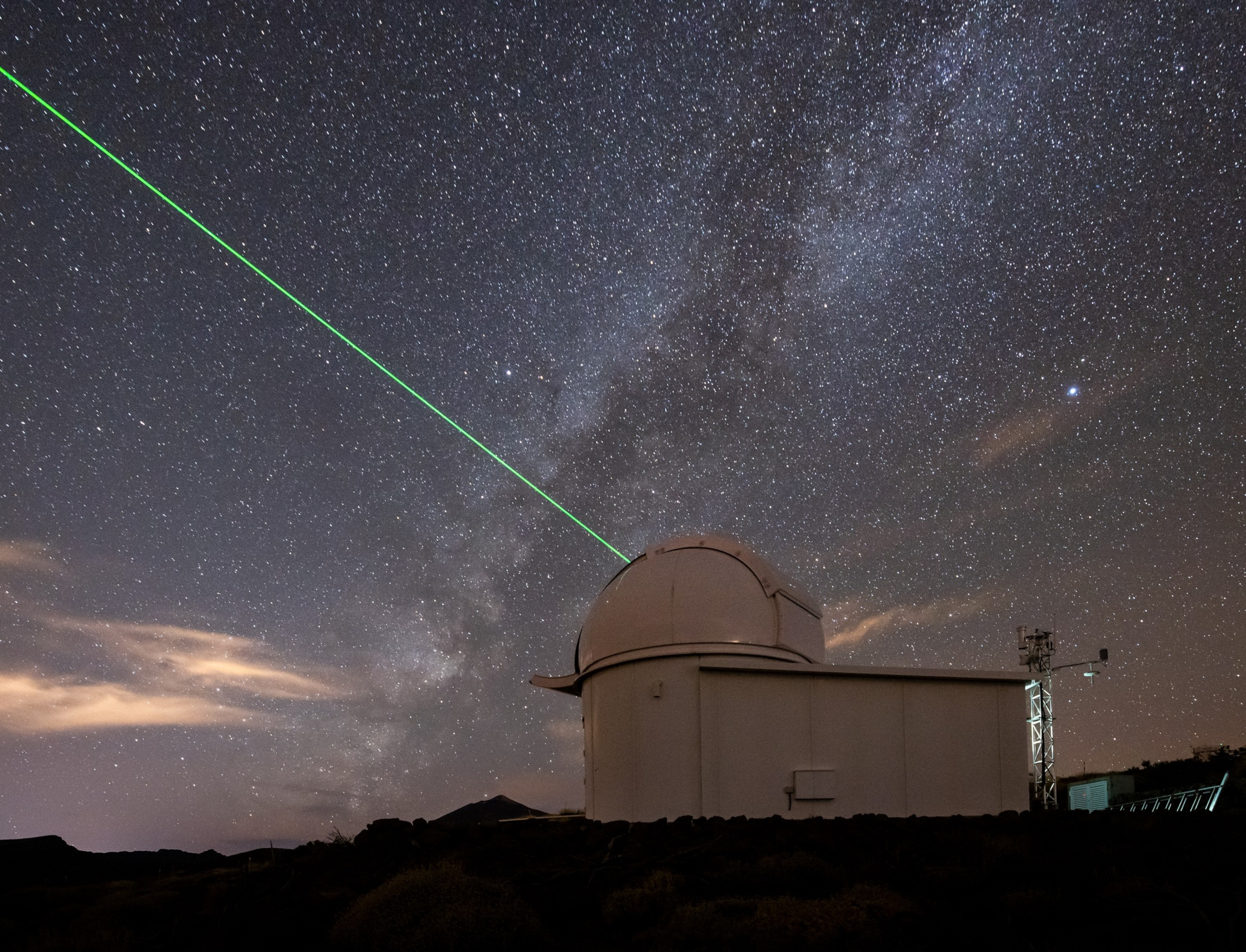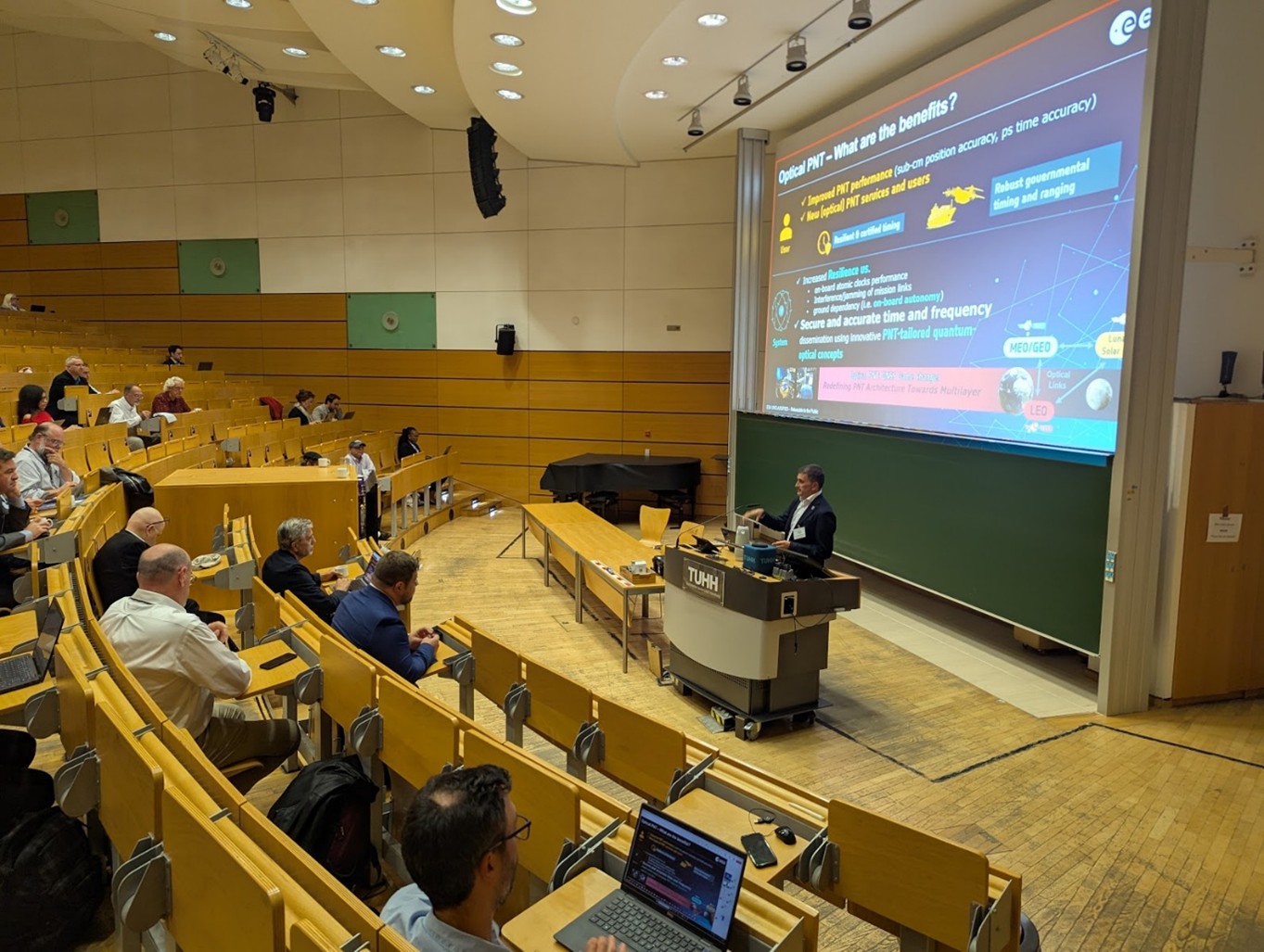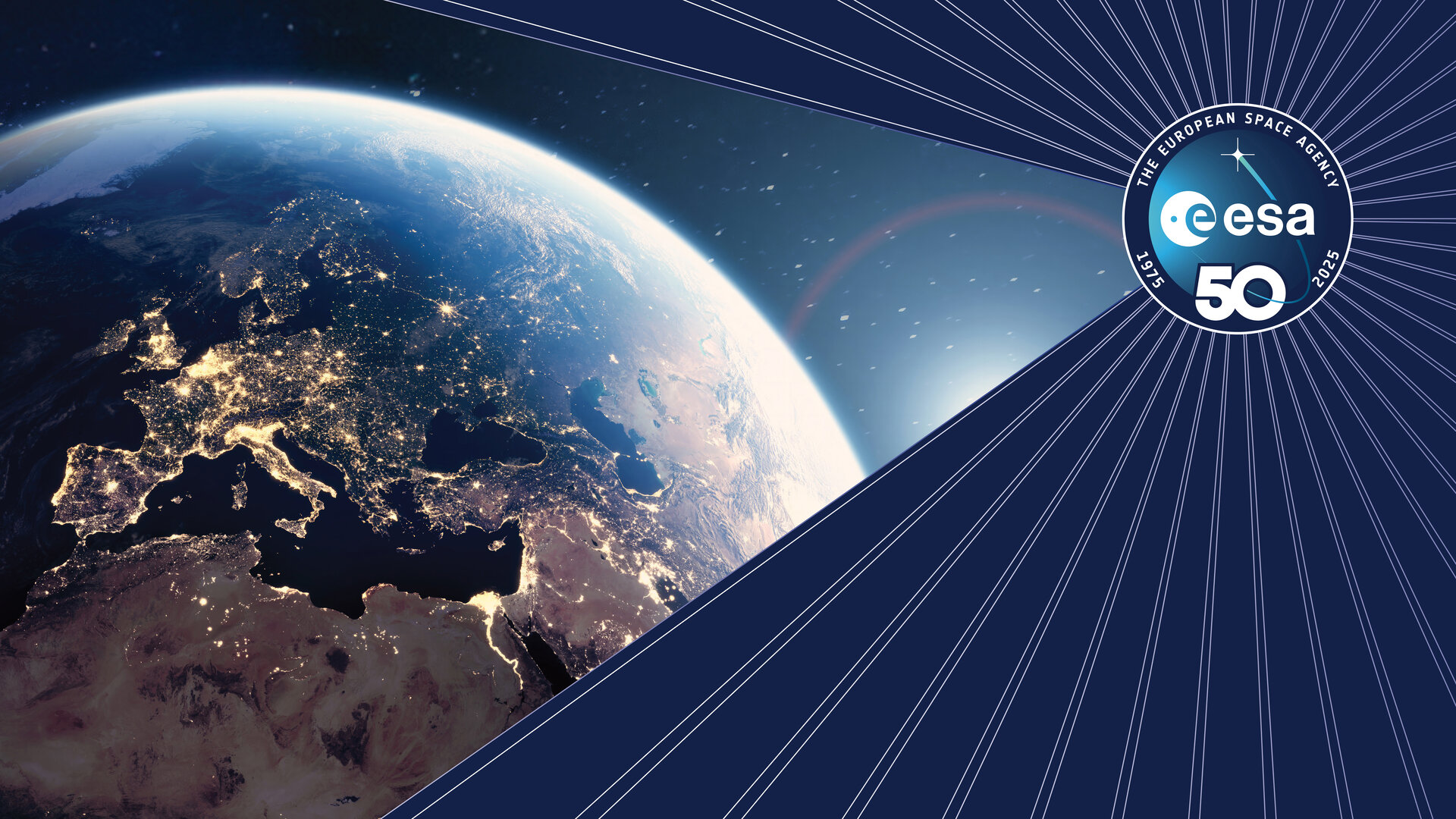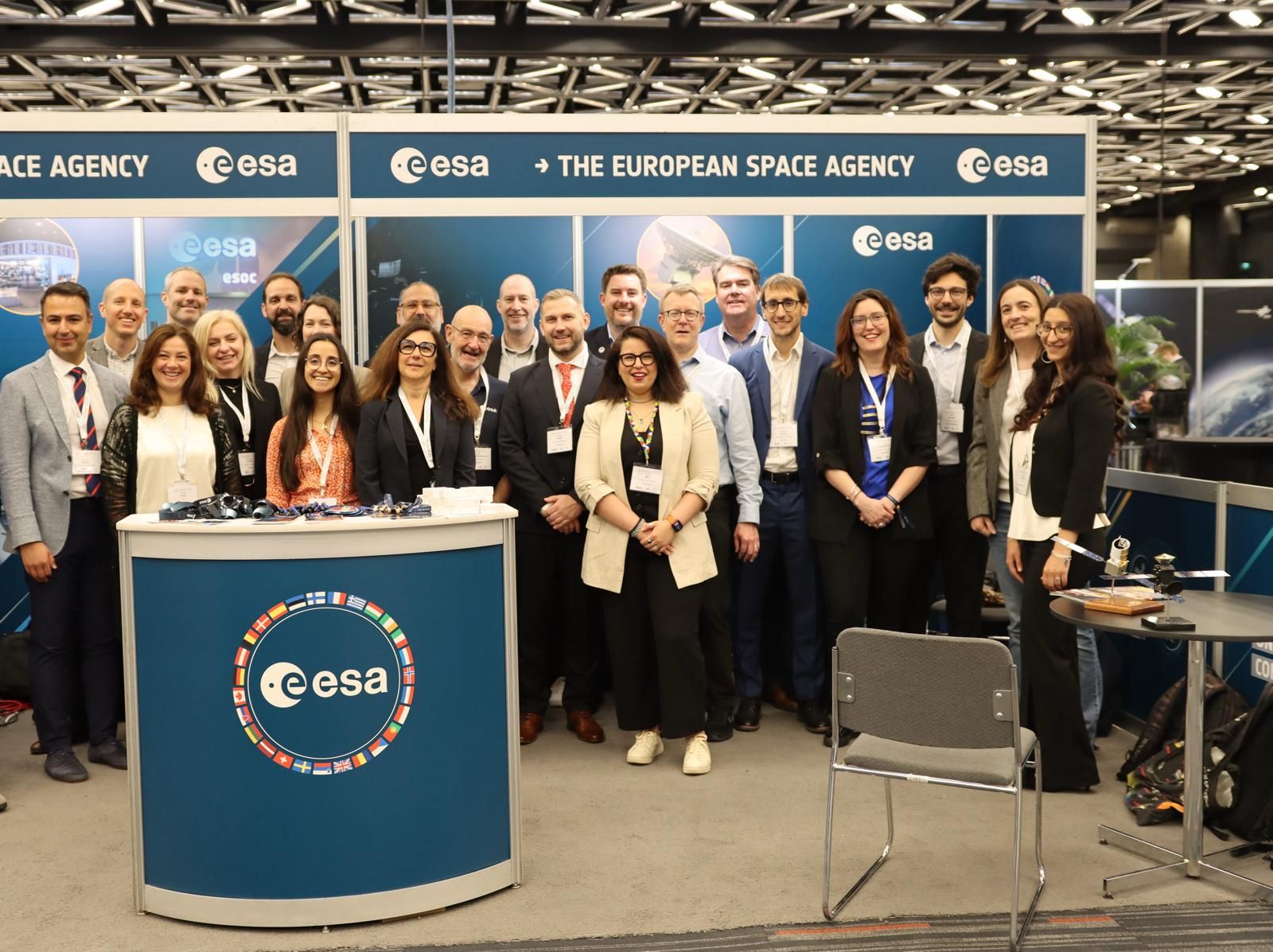News from the Optical Nucleus Network Workshop 2025
The 3rd Optical Nucleus Network (ONN) Workshop took place at ESA’s European Space Operations Centre (ESOC) in Darmstadt, Germany, on October 6, 2025. The event brought together experts from agencies, industry, and academia to exchange knowledge and discuss the evolution of optical ground station networks and technologies for direct-to-Earth optical (DTE) communication.
This year’s workshop comes at a pivotal moment, as ESA and industry intensify efforts to advance and demonstrate optical communication technology. These developments are paving the way for a transition from prototypes to robust systems ready for commercial adoption.
A key highlight from ESA was the presentation of its vision for a ‘Solar System Internet’, presented under the proposed ASSIGN (Advancing Solar System Internet and GrouNd) programme. Operated from ESOC, ASSIGN aims to extend optical communication capabilities beyond Earth orbit. This programme will be presented at the ESA Council Meeting at Ministerial Level (CM25) in November.
The 2025 edition of the workshop focused on the theme of advancing automation in DTE optical communication. Discussions focused on how to achieve full automation of optical ground stations (OGSs) through the development of RF teleport–like ground station controllers, network software for planning, scheduling, monitoring, and control, and the interconnection of multiple ground station networks.
Participants also explored how the community can best support upcoming optical communication satellite launches, while addressing the question of what is still missing to make direct-to-Earth optical communication an alternative to existing radio-frequency systems for maximising the services enabled by space technology.
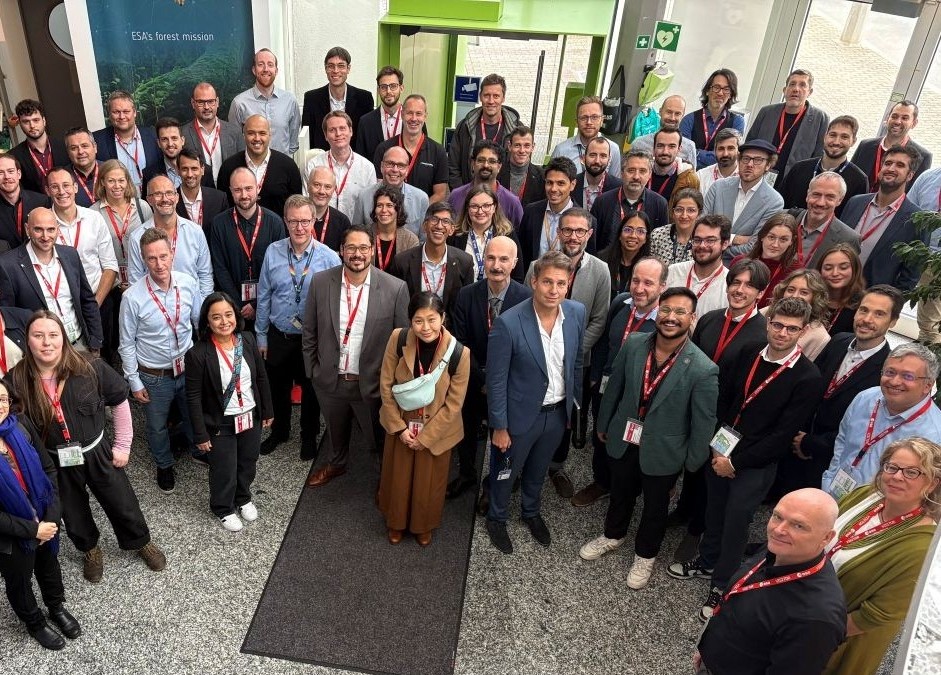
The workshop highlighted the development of the next generation modular and extensible optical communications testbed network of OGSs-enabling DTE. This is a next step forward towards a scalable, fully operational optical ground station network demonstrating data distribution among multiple optical ground stations as per user requirements and gives a platform to various OGS and satellite owners to dynamically connect with each other over one network.
Looking ahead, 2026 will be a landmark year, with several satellite missions and new optical terminals ready for launch, marking significant progress toward operational optical networks.
Notable missions include:
- OPS-SAT VOLT and ORIOLE, unique platforms for in-flight optical communication experiments.
- OptiSat, a Greek CubeSat IOV/IOD mission demonstrating autonomous optical downlinks and onboard AI-based processing, and available for collaborations with optical ground stations in 2026.
- PeakSat, a 3U CubeSat equipped with the ATLAS optical terminal, designed to establish 100 Mbps optical links with Greece’s Holomondas Optical Ground Station in early 2026.
News from the industry
The Optical Nucleus Network (ONN), initiated by ESA and supported by the ScyLight programme, aims to build a European-wide network of optical ground stations (OGSs) for next-generation space-to-ground communication. Starting in 2018 to support optical downlinks from the ISS Bartolomeo platform, it has since grown into a multi-partner effort.
Key milestones include the 2020 ScyLight contract with KSAT and DLR, operational OGSs by 2023, and the first scheduled optical downlink in 2024. Starting from 2025, the ONEST and OPTIMUS testbeds will advance automation, with the network expected to become operational, paving the way for end to end multi-user direct-to-Earth optical communication services.
In parallel, new compact optical terminals from TESAT, TNO, and DLR are driving the next leap in direct-to-Earth laser communications. TESAT’s new SCOT20 terminal, selected for OptiSat, will demonstrate high-speed optical downlinks from a CubeSat platform. Meanwhile, TNO’s CubeCAT and DLR’s OSIRIS4CubeSat terminals continue advancing miniaturisation and performance, making optical links more accessible to optical communications missions.
Recent progress across European OGS facilities included C3PO (Commercial Direct-to-Earth Prototype OGS) and FROGS (the French Optical Ground Station), a multi-mission, multi-orbit facility. New transportable ground station concepts for optical and quantum communication, along with emerging maritime and quantum-ready infrastructure, are enabling flexible, rapid deployment and expanding network coverage for diverse mission needs.
It was acknowledged that integration poses a significant engineering challenge, and to this end DiGOS presented an Interface Control Document (ICD) to support efficient integration between OGSs and optical subsystems, aiming to standardise interfaces, enhance interoperability, and enable future ESA recommendations and Quantum Key Distribution extensions.
Subsystem highlights included new multi-mission optical modems and turnkey OGS integration solutions enabling flexible, high-rate operations. Advances in uplink and deep-space laser systems, including coherently combined high-power technologies, demonstrated significant progress toward future lunar and deep-space optical links. Enhanced atmospheric monitoring and forecasting tools were also presented to improve site characterisation and support reliable next-generation optical communications.
Optical communication is ready for commercial adoption
Among the topics raised was the well-known ‘chicken-and-egg’ dilemma between optical ground stations and satellite availability, with a shared view that it has not been yet fully solved, but that efforts are being made towards a resolution. This is demonstrated by the increasing availability of optical ground stations today (e.g. through the NODES project) and with the satellite launches planned for next year, and hopefully with new collaborations, this dilemma will gradually be resolved.
Participants also stressed that standardisation should focus development by reducing options, while maintaining flexibility to support new and emerging services. Ultimately, the real customer need was summed up simply: “I just want my data, how it’s delivered is not my concern.” This, in fact, remains a point for reflection to encourage more rapid and efficient development.
To meet that growing expectation around optical communication, the ecosystem must ensure interoperability, data shareability, and laser safety, the latter remaining a key technical and regulatory challenge requiring continued attention. The main thoughts about the essence of the ONN for the community were around the workshop’s spirit, with words like “collaboration”, “networking”, “compatibility”, “standardisation”, and “interoperability” standing out most prominently, reflecting the shared vision and strong community engagement within the ONN network.
In closing, participants reaffirmed their shared commitment to fostering a cooperative European and international ecosystem for optical communication. A coordinated European effort is needed to transform optical communications from pioneering prototypes into reliable, scalable infrastructure, a cornerstone of future space connectivity.
